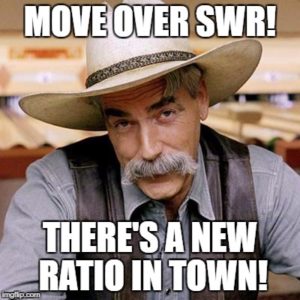Few things occupy the minds of our financial independence/early retirement (FIRE) community as much as safe withdrawal rate (SWR). Much digital ink and sizable amount of print ink has been spilled on this subject over the past few decades, and theories are refined with various adjustments. The consensus view – if I can call it that – among the FIRE community of bloggers is that 4% (SWR) is still adequately safe.
Past studies are cited that even with a 4% SWR, more than 90% of the simulated 30-year retirement portfolios have an ending balance that is above the starting balance. That’s a happy ending for all retirements! It is consistently cited as a very safe withdrawal rate, and became the 4% ‘rule‘. “Stop worrying about the 4% rule“, says a popular thread.

Don’t get too comfortable with 4% SWR.
In math and science, there are many definitive rules but in personal finance, any ‘rule’ should be taken with a pinch of salt….a big pinch, in this case.
Thanks to the pioneering series on this subject by Karsten at Early Retirement Now (ERN), the subject got the “masterly” treatment it deserved. The 4% rule is now deemed not as safe as previously thought, and even mainstream media is picking up on the idea. After detailed analysis, Karsten @ ERN concluded that 3.25%-3.5% should be the safe withdrawal rate for a equity-heavy (at least 75%) portfolio, especially for long retirement horizons of 50 years that early retirees face.

Don’t let your retirement hang by a weak SWR thread!
Independently, I have also looked into this subject from various angles and applied some simple but effective ‘hacks’ using a robust retirement calculator. My conclusion was that a withdrawal rate of 3.27% was about as close to a ‘fail-safe’ number we can get. After my independent research, I was pleasantly surprised (truthfully, relieved!) to see my SWR number matching Karsten’s meticulously researched work.
“The proof of the pudding is in the eating” as the saying goes. So, I have used the 3.27% in my own financial projections. My portfolio equity allocations, though dynamic, hover between 60-100% most of the time.
Still, a doubt lingered…is this truly the ‘safest’ withdrawal rate? It bothered me that the fixed rate did not make any allowances for prevailing market conditions.
This is where the index investors differ from dividend investors. For a detailed analysis of Index investing vs. Dividend investing, head over to my Investing Series. You can bookmark it for reading later after you are done with this article.
Dividend-based SWR?

Counting on rolling forever in fatty dividends? Think again.
Dividend-oriented investors believe that the ‘safest’ withdrawal rate is one that simply spends the portfolio’s actual dividends generated. So, in a portfolio yielding 4% dividends, they believe spending $40,000 a year (on a $1 million portfolio) is very safe because you are not selling any shares.
What if there is a recession and dividends get cut? We’ve seen in an earlier article, that even in the 2008-09 Great Recession, the total dividend cut of S&P 500 companies was only 25%, which were restored in subsequent years. Still, a steadfast dividend investor will tighten the proverbial belt and live with the reduced amount of dividends ($30,000 vs. $40,000 in a $1 million portfolio).
Or…they will plan to make some side income to bridge the gap. Either way, they may remain true to their belief that as long as you spend only the dividends generated, your portfolio will survive forever.
This strategy is appealing, and it works fairly well, with some caveats. The strategy is conceptually sound, but the risks are practical. They are both on the downside and upside. The downside risk is, since the dividend portfolio is based on a limited number of stocks, with likely sector concentration, prolonged recession in the higher ‘weightage’ sectors will drag your portfolio performance (compared to broader index). This will also result in an unreasonably long time for dividends to be restored to previous levels.
Imagine, if after a 25% reduction in dividends, you may manage to live with $10,000 less (in the above example, that is, spend only $30K instead of $40K) for one year. Feel good about your ability to tighten your belt? What if this reduction continued for 5 years like this table below:
Year 0: $40,000 (baseline dividends)
Year 1: $30,000 (major recession hit, taking dividends down by $10K)
Year 2: $30,000
Year 3: $30,000
Year 4: $33,000 (10% increase, showing a slow recovery in fundamentals)
Year 5: $33,000 (no change because the industry is still ailing, and companies are cautious).
Your dividends are $7,000 or 17.5% less than what you enjoyed 5+ years ago! That is one serious cramp on your lifestyle that you have to endure during five long years of retirement, while inflation is probably nudging you to spend more. Not to mention, your dividend stock portfolio would’ve recovered only partially and likely still lag what the broad stock index portfolio would’ve gained in the same 5 years after recession. Not a happy situation!
Relying exclusively on dividends, while conceptually sound, has practical risks related to stock selection and sector concentration. There is another risk as well that doesn’t get much coverage. This risk is in high yields. Many newer converts to the dividend growth investing world sometimes overload their portfolio with higher dividend yielding stocks in order to boost portfolio income.

Healthy dividends are good, but they aren’t magic beans.
I know this because I have done the same thing early in my investment journey! Thankfully, the losses were manageable. Say, you assemble a portfolio of stocks with a juicy 5-6% yield – which means, most of these stocks would be concentrated in traditionally high-yielding sectors like Utilities, Real Estate, BDCs and MLPs.
 Doing so increases your annual dividends to $50-60K (using the same $1 million portfolio example), but introduces market under-performance risk. Due to severe sector concentration, when a recession hits, it drags the portfolio down so badly that fails to recover to pre-crash levels long after the recession ends. Moreover, some of the companies that gave generous dividends in the past either go out of business or permanently reduce their dividend payouts in order to survive.
Doing so increases your annual dividends to $50-60K (using the same $1 million portfolio example), but introduces market under-performance risk. Due to severe sector concentration, when a recession hits, it drags the portfolio down so badly that fails to recover to pre-crash levels long after the recession ends. Moreover, some of the companies that gave generous dividends in the past either go out of business or permanently reduce their dividend payouts in order to survive.
A permanent reduction in income, along with permanent reduction in capital. Terrible! 🙁
This is also where the ‘upside risk’ comes in. That is, you miss out on fully capturing the upside as the rest of the market soars back when the economy recovers. Your portfolio gaining 10% in the post-recession recovery year sounds good only until you see that the broader index has grown by 20% in the same year! Your higher dividends fail to make up for the shortfall in total return performance.
Either way, your portfolio will see a massive reduction of dividends in this kind of a scenario based on higher-yielding dividend stocks. The high-yield portfolio only aggravates the 5-year scenario above, that I illustrated using a 4% dividend yield portfolio.
I don’t know about you, but it will be a serious bummer for me and my family to spend less not just for one year, but for 5+ years, long after the recession ended. I would rather start with a low enough withdrawal so that I don’t face this problem. In other words, get used to the idea of withdrawing less from the portfolio to begin with, rather than make drastic compromises later.
Re-thinking SWR for Indexers
Stock index fund investors face a different problem even with a safe withdrawal rate as low as 3.27%. This means Adam, an early retiree in Jan. 2018 with a 50-year horizon, spends $32,700 in the first year. He feels good knowing that Ten Factorial Rocks and ERN have done solid research behind this, and feels this is as iron-clad as it gets for portfolio withdrawals over the rest of his long retired life.
I hate to disappoint Adam but he faces a major risk. Even a 3.27% withdrawal doesn’t consider the state of the markets! He is retiring at a time when S&P 500 was 2800+ with a trailing price-to-earnings (P/E) ratio of over 27. To get a reasonable metric of P/E ratio, I prefer to use Shiller’s CAPE (cyclically-adjusted P/E ratio) that considers average earnings over the last 10 years to get a ‘smoothened’ picture of the entire business cycle. That number was at 33 for most of Jan. 2018! Except for the peak of dot-com craziness in 2000, the Shiller CAPE ratio has never been this high. The markets are frothy for sure.
I don’t know about you, this should make Adam nervous. Yet, going by what he thought were solid assurances from Ten Factorial Rocks, he proceeds with his ultra-safe 3.27% SWR. I take people who listen to my advice even more seriously than what I do for myself.

Get real, punk.
I worry about Adam because this is what he doesn’t know: If the market tanks 30% in the first year of his retirement, his next year SWR would’ve shot up to 4.67%! This would be true even though he would be withdrawing the same absolute amount of dollars! Here’s how that happens using present year as an example:
A $1 million portfolio of Adam’s in early 2018 (on which he bases his $32,700 withdrawal) would’ve shrunk to $700,000 in Jan. 2019! The same $32,700 divided by $700,000 is 4.67%! Importantly, he still has 49 years left in his retirement, not much different from 50 years. His ‘super-safe’ SWR in Jan. 2018 quickly becomes quite risky in Jan. 2019.
This is what is called sequence of return risk (SORR). For Adam, this leads to SORRY!
Now imagine Adam’s colleague, Betty, who chooses to retire in Jan. 2019, again with a $1 million portfolio. For Betty, a terrible year in the market has already happened prior to her retirement date. She probably had $1.43 million in her stock portfolio in Jan. 2018, which has reduced to $1 million by the date of her retirement a year later.
Let’s say Betty also believes in this website’s 3.27% recommendation, and starts with $32,700. So, here’s how both Adam and Betty look in Jan. 2019:
Adam: $700,000 portfolio, withdrawal of $32,700, 4.67% withdrawal rate, 49-year retirement.
Betty: $1 million portfolio, withdrawal of $32,700, 3.27% withdrawal rate, 50-year retirement.
Just one quick glance at the above stats will tell you whose retirement will be successful. Since Betty’s bad SORR happened in the past (that is, prior to her retirement), she retires with a withdrawal rate (while same in absolute dollars) that is much smaller than Adam. She will comfortably cruise along her 50 year retirement, while Adam is left holding the SORRY bag.
How can two people with same retirement horizon with same starting portfolios on the date of their retirement fare so differently? This is the limitation of a fixed SWR – no matter how low that is.
We need a market feedback mechanism into the calculation of SWR. In other words, SWR should become dynamic, and not a static figure. Among the work done by independent researchers in this area, the following formula is rigorous:
SWR = a + b * (1 / CAPE)
where a and b are constants. 1/CAPE is also called cyclically-adjusted earnings yield (since the inverse of any P/E ratio is the earnings yield for that stock). Among many suggestions in the arcane literature of personal finance for what a and b should be, the most defensible ones in my view is that a = 1.0 and b = 0.5. So, that formula becomes:
SWR = 1.0% + 0.5 * (1 / CAPE)
What this formula does is it makes SWR no longer fixed. It varies with the market’s valuation, as it should! To use the Jan. 2018’s case of Adam when the CAPE ratio was 33, the SWR calculated by this formula would’ve been 2.51%. This works to just $25,100 (instead of $32,700).
How does this help, you ask? Let’s take the same case of market tanking 30% and let’s also assume 10-year average earnings remain the same, only that the market’s valuation drops. The CAPE ratio would decline in that case to 23.1 (30% reduction from 33). So, the same formula would given a SWR of 3.16%. In other words, Adam’s safe withdrawal for 2019 would be 3.16% of his $700,000 portfolio, or $22,151 for 2019.
Note that this is still a reduction from his 2018 withdrawal of $25,100. But the income reduction is more manageable at 12%, rather than 30% earlier.
This formula smoothens out the wide variability in withdrawal amounts to some extent, and makes the SWR sensitive to prevailing market conditions. This way, at the beginning of the year, every early retiree can look at their retirement portfolio afresh – as if they are beginning their retirement for the first time. In a way, every year is the first year of the rest of your retired life!

But worth it…
What about Betty? Remember she retires one year later than Adam, after the market decline, that is, after CAPE reaches 23.1. So, her SWR will start at 3.16%, which works to $31,600 for 2019. This is 42% more than Adam’s withdrawal of $22,151. That makes sense because Betty’s portfolio is also 42% more than Adam’s ($1 million vs. $700K).
All good…order is restored in the SWR universe!
The above formula gives, in my view, possibly the ‘safest’ withdrawal rate for an all-equity or mostly equity portfolio over the many decades of retirement early retirees face. This analysis is very conservative for sure, for various reasons, including the ignorance of state pensions (social security in U.S.).
In Summary

I realize some of you may be disappointed by the conclusion of this article, because my already low 3.27% SWR has now become much lower (now 2.54%, considering today’s CAPE at 32.48). This is a 23% reduction in income in the first year of portfolio withdrawal. 🙁
That’s unfortunately the penalty we pay for a very high valuation in the market at the time of starting our retirement. This method is far safer (safest?) than using any fixed SWR. But remember this is very conservative also because it assumes no side income or any retirement pensions/social security. Add those income streams in, and quite likely, you can eliminate the shortfall in portfolio withdrawals (and then some!) even when using variable SWR.
You will notice that this article completely ignores “probability of success”. Even the robust retirement calculators (such as cFIREsim) that estimate say, 90%, 99% or even 100%, probability of success of any withdrawal amount bases them entirely on backward-looking simulation. My objective of this article is to get a forward-looking sense of SWR based on current valuation in the market.
Some mathematically-inclined readers will deduce that the above SWR formula gives 4% as the answer when the CAPE ratio is 16.65. That’s absolutely correct. If we ever realize a moderate valuation scenario like 16-17 P/E ratio, then we can all go back to the famed 4% ‘rule’ of SWR and live happily ever after!
Until then, buckle up and use a valuation-based dynamic SWR if you want the ‘safest’ withdrawal from your portfolio. Travel safely, my 10! friends.
Raman Venkatesh is the founder of Ten Factorial Rocks. Raman is a ‘Gen X’ corporate executive in his mid 40’s. In addition to having a Ph.D. in engineering, he has worked in almost all continents of the world. Ten Factorial Rocks (TFR) was created to chronicle his journey towards retirement while sharing his views on the absurdities and pitfalls along the way. The name was taken from the mathematical function 10! (ten factorial) which is equal to 10 x 9 x 8 x 7 x 6 x 5 x 4 x 3 x 2 x 1 = 3,628,800.

19 comments on “What is the SAFEST Withdrawal Rate?”